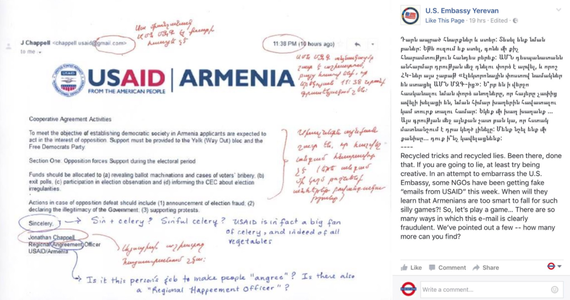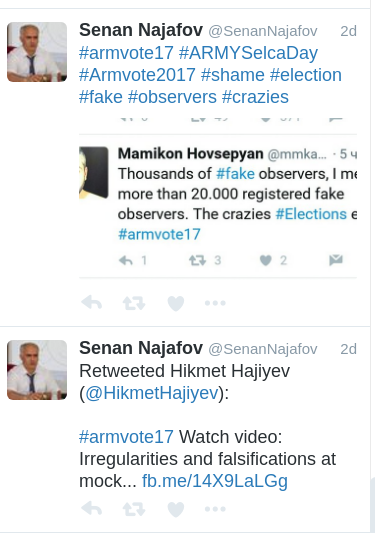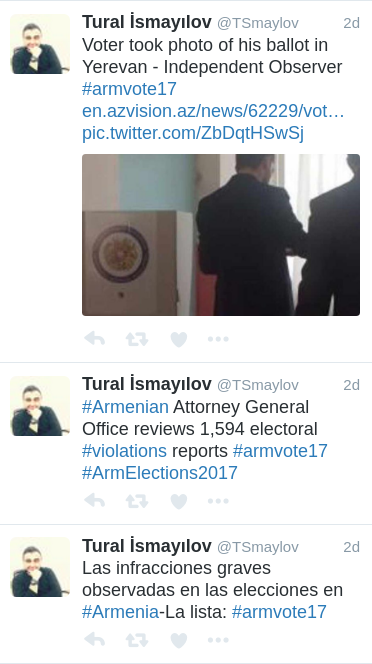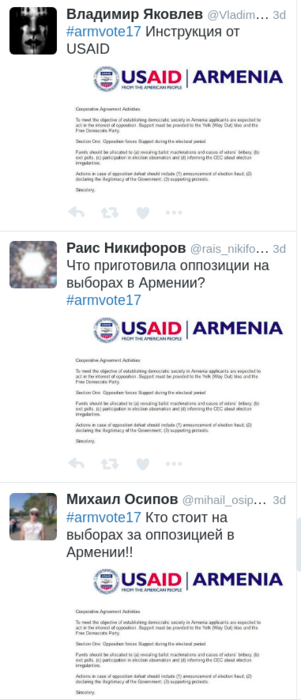

The Armenian Parliamentary election of April 2 was widely discussed on social media. Politicians, journalists, observers and also a large number of citizens were actively posting on different platforms. As usual, social and political discussions were most active on Facebook, but media activists, election observers, journalists and political analysts resorted to Twitter as a more news-focused platform.
Beginning with the 2012 parliamentary elections, the few but active Twitter users from Armenia have typically used this platform to disseminate detailed reports of electoral processes in the country. For those Armenians interested in elections but living abroad, for foreign correspondents and analysts interested in developments in Armenia, Twitter has become the most accessible source to follow. This is also because Twitter has a more functional search engine and since most posts from Armenia are in English and often in Russian it is where the most comprehensible information can be found.
Usually, the Armenian Twitter community discusses and agrees on a hashtag for every major event. This time around, the consensus was #Armvote17. And as is usually the case in recent years, there was an attempt to hijack the hashtag. As almost always during important events in Armenia, the attack on the hashtag came from Azerbaijan.
In the last couple of years, the Azerbaijani propaganda machine has made it its business to be actively involved in all discussions about Armenia and Karabakh and attempts to hijack hashtags. On April 24, as a rule, Twitter users from Azerbaijan start using #ArmenianGenocide and all related hashtags very vigorously in an attempt to sell an alternative presentation of a historic reality.
The Azerbaijani Twitter propaganda started with the IRELI youth GONGO organization in 2012-2013. Hundreds of young men and women were delegated the task of writing propaganda pieces in their blogs. Then they extended over to Twitter; an incredible number of posts on Armenian issues appeared. Eventually, in 2014 the group dispersed due to internal policy disagreements and gave way to the appearance of new Twitter “soldiers.” It seems this is when the strategy changed as well. Hijacking Armenia related hashtags became an objective.
On April 2, the Azerbaijani Twitter army was ready for action. It was a Sunday, a day of rest in Azerbaijan when most people enjoy down time with their families, however the propagandist Tweeters started early in the morning and continued late into the night with their posts.

“ The gist of the Tweets coming from Azerbaijan was to present elections in Armenia in the worst possible light. ”

An example of an Azerbaijani propaganda troll.

Azerbaijani tweets were written in several languages – Russian, English, French, Spanish.


